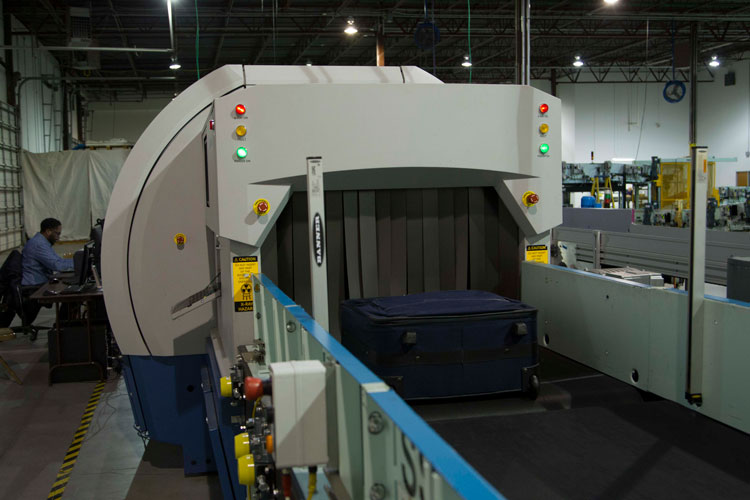
Our CTX 9800 DSi™ is ECAC Std 3-approved for 0.3 m/s & 0.5m/s. © 2017 Morpho Detection, LLC. All rights reserved.
When the European Commission set the Standard 3 deployment agenda for hold baggage screening, the 2020/2022 deadline seemed far away. But factor in time for planning and implementation and the mandate for Standard 3 compliance is fast approaching. At several recent industry conferences, airports have been discussing the impact of upgrading their explosive detection systems (EDS) and what’s holding them back from getting started.

As Morpho Detection’s Regional Sales Director for the UK, Martin Parker has helped airports successfully upgrade to Standard 3.
“Airports are looking for solid advice backed by data on what they need to invest in,” explains Anne Marie Pellerin, Managing Partner at Lam Lha, a security innovation consultancy firm. “They want the assurance that when they upgrade their systems to Standard 3-approved EDS, their investment will also meet future requirements and future growth needs.”
What are the options available? How should airports get started? According to Martin Parker, Morpho Detection’s Regional Sales Director for the UK, getting clear on your individual airport or terminals needs is the first step.
“As the deadline in the UK is 2018, I’ve spent that last four years working with airports of all sizes, all with completely different requirements – from Newquay to Heathrow, Bristol, Manchester and others,” he points out. “The key has been helping each customer find the right solution for each situation. Working in partnership, we discuss space requirements; networking and redundancy needs; options for in and out of gauge; and passenger counts to get prescriptive on how many machines are truly needed.”
Parker further advises airports to select the EDS supplier first, investigating the different machine capabilities before they actually go to tender. “Upgrading to Standard 3 EDS requires redesigning the baggage handling system. If the BHS supplier knows the exact dimensions and performance characteristics of each machine, they’re better positioned to optimise the system design,” explains Parker.
In evaluating the capabilities of different EDS machines, it’s important to look at overall availability and performance data, platform scalability, power consumption rates, and training and service options to ensure your investment will be supported to last the next 15 to 20 years. Site visits are helpful, as well as talking to airports that have recently gone through the same process.
Another aspect for consideration: the manufacturers experience in delivering on production and implementation promises.
“There is a worry that the current deployment rate calls for a huge production of equipment. Can this demand be met?” says François Mesqui, Morpho Detection’s Vice President of Government Affairs. “Our past performance says yes. Following the attacks on September 11th 2001, the demand for EDS units increased dramatically. In one year, production lines were able to produce ten times as many machines as they had before, with teams ready to implement and service them.”
“Going to Standard 3 is a big investment for airports which might feel overwhelming in the beginning,” concludes Parker. “But if you work with an experienced supplier, you’ll have a trusted advisor to help guide you every step of the way.”
Get further insights and Standard 3 best practices by visiting www.morphodetection.com/APTB or contact us at info@morphodetection.com.
The information, materials, and opinions contained in this guide are for general information purposes and your convenience only. They are not intended to constitute legal or other professional advice and should not be relied on or treated as such. They do not constitute any guarantee and/or implied warranties.







